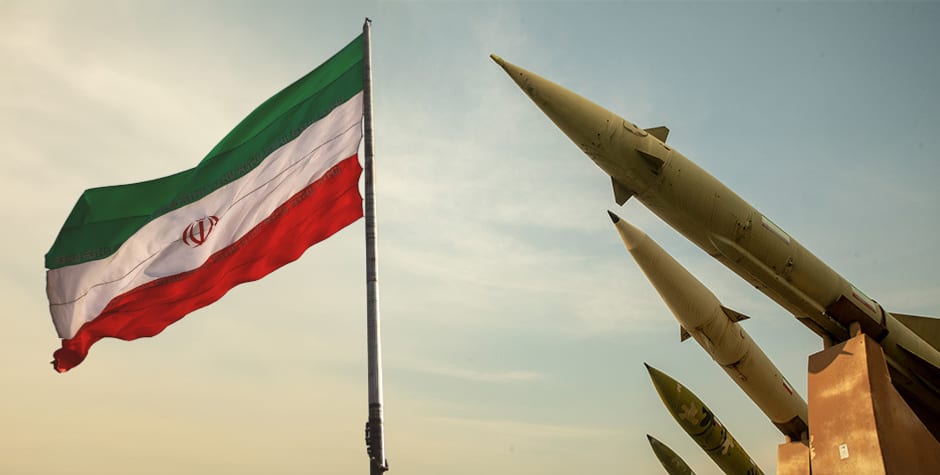Seven Years Later: Why Withdrawing From the Iran Deal Was the Right Call
Listen tothis article
Seven years ago, President Trump made one of his most consequential foreign policy decisions by withdrawing from the Obama-negotiated Iran nuclear deal (JCPOA). As Secretary of State during that pivotal moment, I not only supported this decision—I championed it. Time has validated what we knew then: It was the right call for American security and global stability.
The deal negotiated under the Obama Administration rested on a dangerous premise: that the world’s leading state sponsor of terrorism could be trusted to abandon its nuclear ambitions through limited, temporary constraints. This foundation was built on sand. This is why I helped lead the opposition to the agreement as a Member of Congress.
The JCPOA has several fundamental flaws.
First, its sunset provisions merely postponed Iran’s nuclear capabilities rather than eliminating them, even if the agreement was followed. Once these constraints expired, Iran would retain the infrastructure for a rapid sprint to nuclear weapons. And it did not stop them from developing the essential delivery systems for a nuclear weapon.
Second, the verification regime was a joke. When Israel’s intelligence services exposed Iran’s secret nuclear archive in 2018, it confirmed what we had long suspected: Iran never abandoned its nuclear weapons program and entered the agreement in bad faith.
Third, and perhaps most critically, the deal addressed only one dimension of Iran’s threat while funding its malign activities. The windfall from sanctions relief flowed directly to the Islamic Revolutionary Guard Corps (IRGC), fueling proxy wars and terrorist organizations across the region—from Hezbollah in Lebanon to the Houthis in Yemen.
Critics often present a false dichotomy: war or a deal. Our Administration proved there’s a more effective third path—maximum pressure that targets the full spectrum of Iran’s threatening activities while supporting the Iranian people’s resistance to their oppressors.
As Secretary of State, I outlined 12 requirements for any legitimate agreement with Iran. These distill to three non-negotiable conditions:
- Complete dismantling of uranium-enrichment capabilities with unfettered international inspections
- Cessation of all support to terrorist proxies
- Normalization with neighbors by dismantling the IRGC’s external terror network
After less than two years, our maximum pressure campaign nearly broke the regime financially. Had this strategy continued, the ultimate goal—a fundamental change in Iran’s behavior or regime—could have been within reach. But Joe Biden reversed that policy and appeased the Iranian regime.
President Trump today has unprecedented leverage to reach progress. Iran stands at its weakest point in decades—its proxies decimated by Israel, its economy crippled by mismanagement and corruption, and Sunni states unified in opposition to a nuclear Iran.
To capitalize on the moment, Trump should embrace a two-pronged strategy if they do not agree to completely dismantle their nuclear program:
First, reinstate maximum pressure through comprehensive sanctions targeting the regime’s financial lifelines—particularly its oil exports and access to international banking.
Second, actively support the organized opposition to the Iranian regime. The brave protesters who have repeatedly taken to the streets demonstrate that the Iranian people reject their theocratic rulers. America must stand unequivocally with these freedom-seeking citizens, not with the mullahs who oppress them.
Any agreement that fails to meet our core requirements would squander the progress we’ve made and the leverage we’ve built. The Iranian regime has never demonstrated a genuine interest in peaceful co-existence with its neighbors; its actions consistently reveal its true nature.
The consequences of a nuclear-armed Iran would be catastrophic. First and foremost, it would pose an existential threat to Israel—our closest ally in the region. Iran’s leadership has repeatedly called for Israel’s destruction, with former President Ahmadinejad infamously threatening to “wipe Israel off the map.” A nuclear weapon would give the mullahs the means to execute on their genocidal ambition.
Second, a nuclear umbrella would supercharge Iran’s already extensive support for terrorism. Tehran currently funds, arms, and directs terrorist groups like Hezbollah, Hamas, and Palestinian Islamic Jihad. With nuclear protection, Iran could dramatically escalate the lethal capabilities it provides to these proxies, putting American interests, personnel, and allies at severe risk throughout the region and beyond.
Third, the threat to American security would be direct and immediate. Iran’s advanced ballistic missile program—coupled with its clandestine work on delivery systems—could eventually place American cities within striking distance. The intelligence community has confirmed that Iran’s intercontinental ballistic missile development continues unabated, alongside cyber capabilities targeting critical American infrastructure. A nuclear-armed Iran would represent the gravest terrorist threat in modern history: a regime that glorifies martyrdom while possessing humanity’s most destructive weapons.
The thousands of victims of Iran’s terror apparatus across the Middle East—and its own citizens brutalized for demanding basic rights—testify to an inescapable truth: Peace is impossible under the current regime.
President Trump was both right and courageous seven years ago when he withdrew from a fundamentally flawed agreement despite immense pressure. Today, I believe he will show that same resolve by rejecting inadequate half-measures, reinstating maximum pressure, and championing the Iranian people’s aspiration for freedom.
The security of America, the future of the Iranian people, and the stability of the world depend on it.
